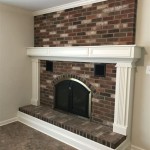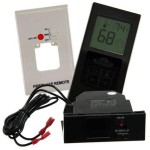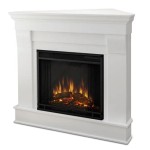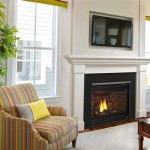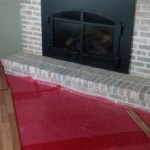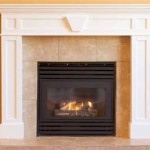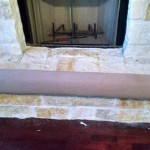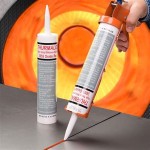Fireplace Insert Sizes: A Comprehensive Guide
Selecting the appropriate size for a fireplace insert is a critical decision that directly impacts heating efficiency, aesthetic appeal, and overall performance. A fireplace insert is a self-contained heating unit designed to fit within an existing masonry or prefabricated fireplace. Unlike open fireplaces, inserts offer significantly improved heating efficiency by containing and radiating heat into the room instead of losing it up the chimney. Understanding the various size options and their implications is essential for making an informed purchase.
The dimensions of a fireplace insert are not standardized across manufacturers. This variability necessitates careful measurement and consideration of the existing fireplace opening to ensure a proper fit. Inserts are typically measured in width, height, and depth, with slight variations existing between models. These dimensions are crucial for determining whether an insert can be successfully installed without extensive modifications to the fireplace structure.
Key Point 1: Measuring Your Fireplace Opening
The initial step in selecting a fireplace insert is to accurately measure the existing fireplace opening. This involves taking measurements of the width, height, and depth of the firebox. It is important to measure the smallest opening within the firebox, as this will dictate the maximum size insert that can be accommodated. Using a measuring tape, determine the width at the front of the firebox, then measure the width at the back. Use the smaller of the two measurements. Next, measure the height from the floor of the firebox to the lowest point of the firebox lintel. Finally, measure the depth from the front of the firebox to the back wall.
These measurements should be recorded carefully. It is also advisable to take photographs of the fireplace opening from multiple angles. These photos can be useful when consulting with a fireplace insert retailer or installer, as they provide a visual representation of the fireplace's construction and any potential challenges.
It is crucial to understand that the insert's dimensions should be slightly smaller than the fireplace opening to allow for proper installation and ventilation. A snug fit can impede airflow and potentially lead to overheating or other operational issues. There should be adequate clearance around the insert for proper venting and heat dissipation.
In some cases, the fireplace opening may need to be modified to accommodate a specific insert. This could involve removing bricks or adjusting the lintel. However, such modifications should only be performed by qualified professionals to ensure structural integrity and compliance with local building codes.
Furthermore, it is important to consider the shape of the fireplace opening. Fireplaces can have rectangular, arched, or irregularly shaped openings. Inserts are typically designed for rectangular openings, so adapting an insert to a different shape may require custom fabrication or modifications.
Accurate measurement is paramount. Double-checking measurements and seeking professional advice can prevent costly mistakes and ensure a successful installation.
Key Point 2: Understanding Insert Size Categories
Fireplace inserts are generally categorized into small, medium, and large sizes, each designed to heat different square footage areas. These size categories are not rigidly defined, and the specific dimensions and heating capacity can vary between manufacturers. However, understanding the general characteristics of each category can help narrow down the selection process.
Small fireplace inserts are typically designed for heating smaller rooms or zones, such as bedrooms or smaller living areas. These inserts often have a lower BTU (British Thermal Unit) output, which is a measure of the amount of heat the insert can produce per hour. The physical dimensions of small inserts are generally more compact, making them suitable for smaller fireplace openings. Common dimensions for small inserts might be around 20-25 inches wide, 20-25 inches high, and 18-22 inches deep.
Medium fireplace inserts are suitable for heating average-sized living rooms or family rooms. They offer a greater BTU output than small inserts and can effectively heat a larger area. The dimensions of medium inserts tend to be larger, typically falling in the range of 25-30 inches wide, 25-30 inches high, and 22-26 inches deep. These inserts strike a balance between heating capacity and physical size, making them a popular choice for many homes.
Large fireplace inserts are designed for heating larger open-concept spaces or multiple rooms. These inserts have the highest BTU output and are capable of generating a significant amount of heat. The dimensions of large inserts are the most substantial, often exceeding 30 inches in width and height, and 26 inches in depth. Installing a large insert requires a correspondingly large fireplace opening and may necessitate structural modifications.
The choice between small, medium, and large inserts depends on the intended heating area and the dimensions of the fireplace opening. Selecting an insert that is too small will result in insufficient heating, while an insert that is too large may overheat the room and waste energy. It is essential to carefully consider the square footage of the area to be heated and choose an insert with an appropriate BTU output.
Furthermore, the design and aesthetics of the insert should be considered. Inserts are available in a variety of styles, from traditional to contemporary, and can be customized with different finishes and features. The size of the insert can influence its visual impact on the room, so it is important to choose an insert that complements the existing décor.
Manufacturer specifications provide the most accurate information regarding the dimensions and heating capacity of each insert model. Consulting these specifications is crucial for making an informed decision.
Key Point 3: Impact of Insert Size on Performance and Efficiency
The size of the fireplace insert directly impacts its performance, heating efficiency, and overall cost of operation. Selecting the appropriate size insert is crucial for maximizing its benefits and avoiding potential problems.
An oversized insert, meaning one that is too large for the space it is intended to heat, can lead to overheating and discomfort. In a smaller room, a large insert may produce too much heat, causing the room to become uncomfortably warm. This can result in frequent adjustments to the insert's settings, which can reduce its efficiency and lifespan. Moreover, an oversized insert may cycle on and off frequently, leading to temperature fluctuations and uneven heating.
An undersized insert, on the other hand, may not be able to adequately heat the space. In a larger room, a small insert may struggle to maintain a comfortable temperature, especially during cold weather. This can result in the insert operating at its maximum output continuously, which can increase energy consumption and shorten its lifespan. An undersized insert may also fail to provide sufficient heat for zone heating, which is the practice of heating only the occupied areas of a home.
The efficiency of a fireplace insert is measured by its heating efficiency rating, which is the percentage of heat produced that is actually delivered to the room. The size of the insert can affect its heating efficiency rating. An adequately sized insert will operate more efficiently than an oversized or undersized insert. When an insert is properly sized, it can maintain a consistent temperature and operate at its optimal efficiency level.
The cost of operation is also influenced by the size of the insert. An oversized insert will consume more fuel than necessary, increasing heating costs. An undersized insert may require supplemental heating sources, such as electric space heaters, which can also increase energy consumption and costs. Choosing an insert that is appropriately sized for the space will minimize fuel consumption and reduce heating costs.
In addition to heating efficiency, the size of the insert can also affect its maintenance requirements. Oversized inserts may require more frequent cleaning and maintenance due to the increased combustion rate. Undersized inserts may experience excessive wear and tear due to constant operation at maximum output. Selecting an insert that is appropriately sized can help prolong its lifespan and reduce maintenance costs.
Furthermore, the size of the insert can impact its ability to provide even heat distribution throughout the room. An adequately sized insert will be able to circulate heat effectively, preventing cold spots and ensuring a comfortable temperature throughout the space. Oversized or undersized inserts may struggle to distribute heat evenly, leading to temperature imbalances.
Therefore, selecting the correct size fireplace insert is crucial for optimizing its performance, heating efficiency, and cost of operation. Careful consideration of the space to be heated, the fireplace opening dimensions, and the insert's BTU output will ensure a comfortable and efficient heating solution.

Superior 32 Inch Medium Direct Vent Gas Insert Dri2032 North Country Fire

Lopi 430 Gas Fireplace Insert Hearth And Home Distributors Of Utah Llc

616 Deluxe Ember Glo Made In America Fireplace Xtrordinair

The Proper Way To Measure Dimensions Of A Fireplace

Osburn 2400 The Fireplace Insert At Osburnwoodstoves Com

Lopi Gas Insert Documents Farrell S Fireside

Sierra Flame 30 Electric Fireplace Insert Firebox Heater Ins Fm Fireplaces Depot

Fireplace Inserts Explained Typical Sizing Functionality More

Napoleon Gdi44 Gas Insert Fireplacepro Fireplace Dimensions Vented

White Mountain Hearth By Empire Comfort Systems Direct Vent Gas Fireplace Insert Loft
Related Posts

